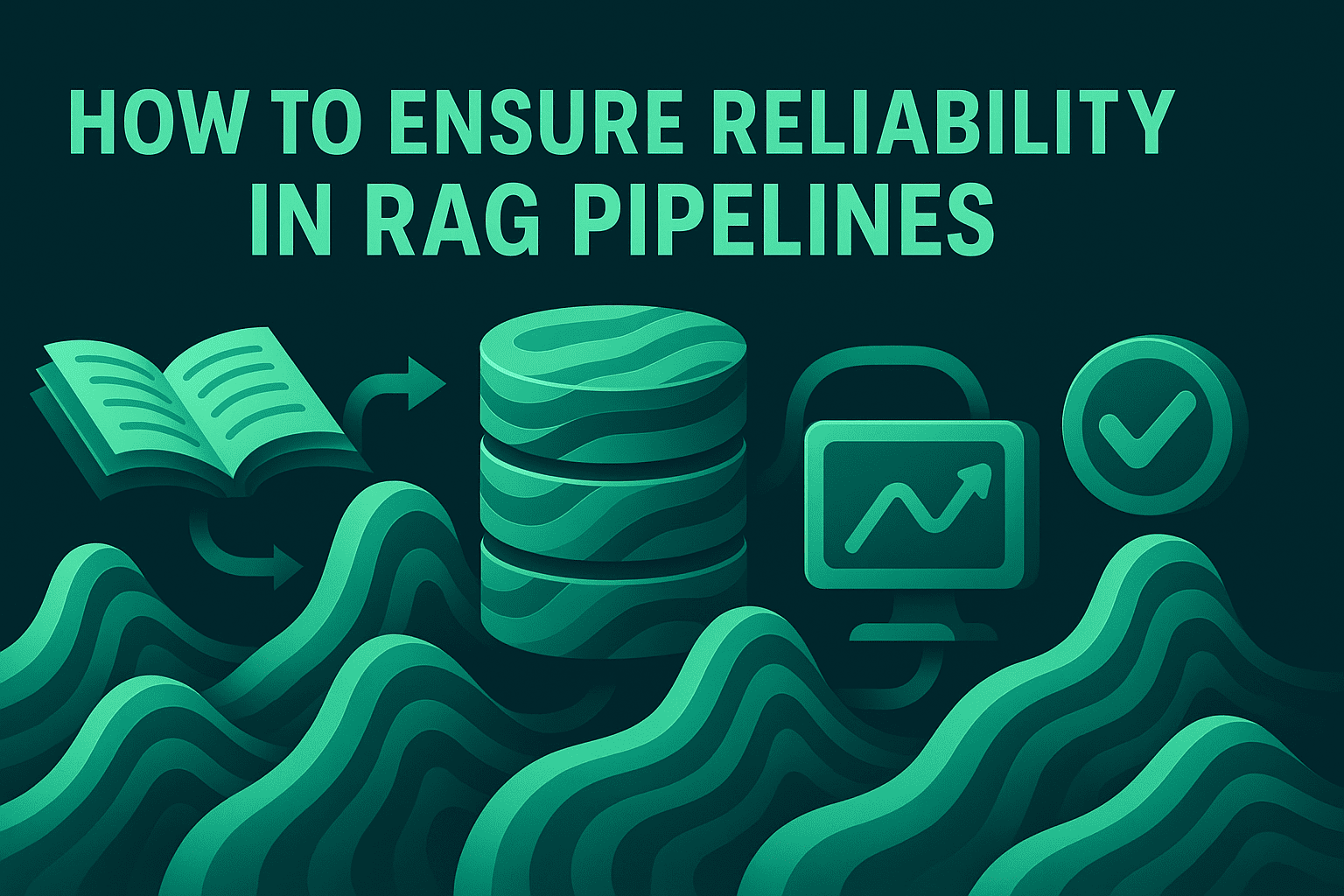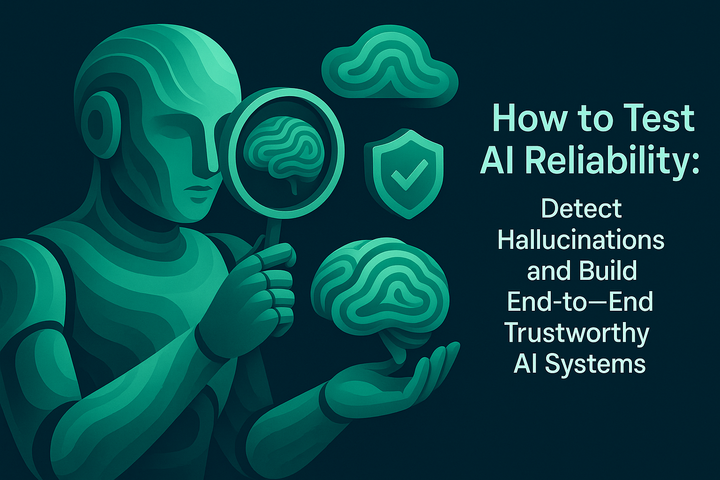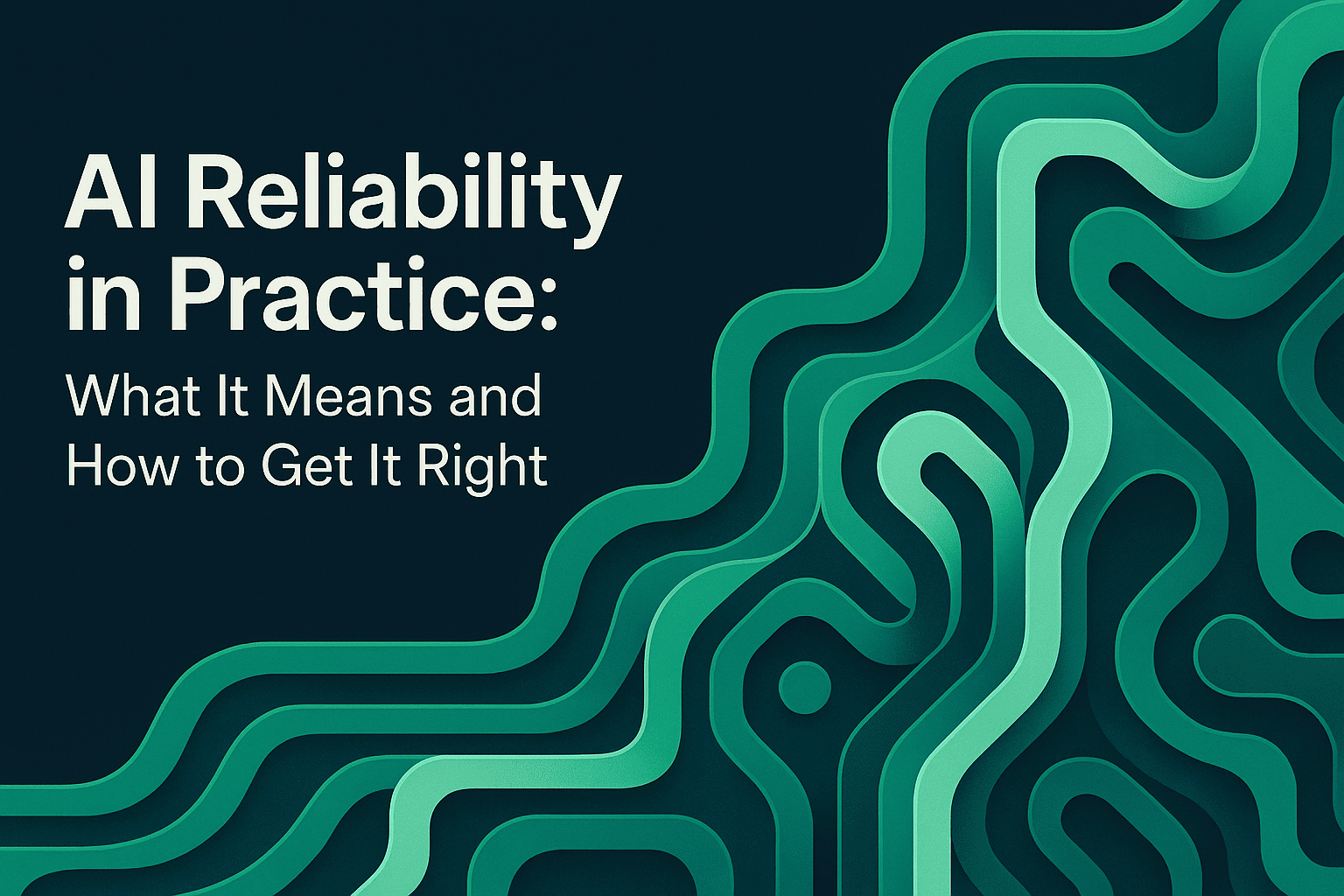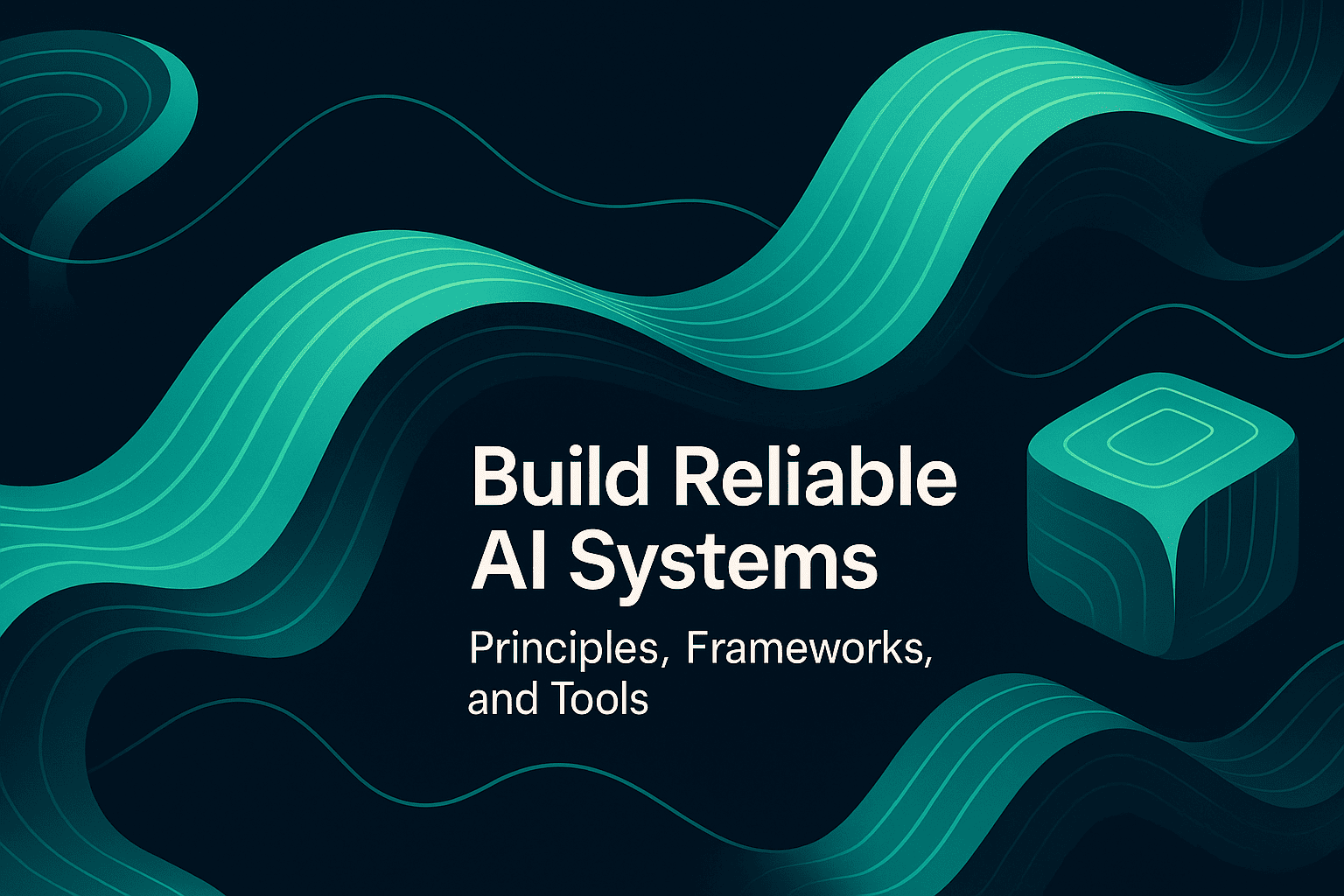How to Ensure Reliability in RAG Pipelines

Retrieval-augmented generation (RAG) has become the default pattern for grounding large language models (LLMs) in domain-specific knowledge. Yet shipping reliable RAG systems requires more than “add a vector database and call it a day.” Reliability emerges from design choices across chunking, retrieval, generation, evaluation, and observability, each with measurable trade-offs and failure modes. This guide distills rigorous practices to build trustworthy, production-grade RAG pipelines and maps those practices to the capabilities in Maxim AI’s full-stack platform for experimentation, simulation, evaluation, and observability.
Why RAG Pipelines Fail, and What Reliability Requires
RAG fails for predictable reasons:
- Poor chunking splits relevant passages or introduces noise that dilutes retrieval quality. Evaluations show chunking strategy alone can swing recall by up to 9%. See token-level retrieval evaluation and chunking strategy impact in the Chroma technical report, including IoU, precision, and recall computed at the token level, not whole-document level.
- Naive retrieval (dense-only or sparse-only) underperforms when queries mix synonyms, domain terms, and exact phrases; hybrid search and rank fusion improve coverage and precision. Weaviate explains hybrid search that fuses BM25 with dense embeddings and describes Reciprocal Rank Fusion (RRF) for fair combining of ranked lists.
- Generation can confabulate beyond retrieved context without guardrails; faithfulness, grounding, and hallucination detection must be explicit. Recent surveys catalog methods across prompt engineering, retrieval strategies, and post-generation correction.
- Metrics borrowed from translation or summarization (BLEU/ROUGE) are insufficient alone; RAG quality is fundamentally about contextual grounding and retrieval adequacy rather than surface-form overlap. See discussion of common RAG metrics and their roles.
- Production reliability depends on continuous llm observability, distributed tracing, automated rag evals, and alerts tied to quality thresholds, not just offline tests. See guidance on monitoring and trace-based debugging in Maxim’s primer on LLM observability and distributed tracing for multi-agent systems.
Reliability, therefore, requires a holistic approach: strong data curation and chunking; hybrid retrieval with reranking; generation constraints and faithfulness checks; robust evals pre-release and in-production; and deep rag observability through ai tracing and agent monitoring.
Design Pillar 1: Chunking and Data Curation That Preserve Signal
Chunking determines what tokens are retrievable; errors here propagate downstream. Rigorous evaluation at the token level shows different strategies (semantic, recursive, overlap) yield materially different outcomes on recall and token efficiency, using IoU and token-level precision/recall is more predictive of RAG performance than document-level nDCG alone. (See methodology and results in “Evaluating Chunking Strategies for Retrieval.”)
Practical guidance:
- Prefer natural boundaries (headings, paragraphs, sentences) and tune overlap just enough to avoid split facts; excessive overlap inflates token noise and cost.
- For heterogeneous corpora (manuals, research, code), combine strategies (structure-aware + semantic clustering + limited overlap) and validate with token-level metrics.
- Use contextual chunking (prepend brief, document-aware context) to mitigate “isolated chunk” weakness; hybrid contextual retrieval with reranking improves query–context alignment (see “Building Contextual RAG Systems with Hybrid Search & Reranking”).
- Continuously curate datasets from production logs; integrate human review to prune noisy chunks and annotate ambiguous boundaries.
Maxim’s Data Engine streamlines multi-modal ingestion, enrichment, and dataset evolution from logs and eval outputs. This enables ongoing data curation and targeted splits for rag evaluation and fine-tuning.
Design Pillar 2: Hybrid Retrieval with Rank Fusion and Reranking
Dense embeddings capture semantics; BM25 captures exactness. Hybrid retrieval combines both, then fuses rankings (e.g., RRF) to ensure diverse relevance signals contribute fairly. Weaviate’s hybrid search article outlines BM25/BM25F, fusion algorithms, and when hybrid excels (See “Hybrid Search Explained”).
Practical guidance:
- Use hybrid search to avoid failure modes in specialized terminology or exact phrase queries.
- Apply RRF or similar fusion to combine candidate sets; then use a cross-encoder reranker for query-conditioned relevance.
- Measure retrieval adequacy at the token level (recall of relevant excerpts, IoU); surface-form metrics alone are insufficient.
Maxim’s Observability suite supports end-to-end rag tracing for retrieval spans and agent tracing across multi-step workflows, letting teams diagnose low recall or noisy context quickly. With Bifrost, Maxim’s ai gateway, you can unify models across providers and leverage semantic caching to reduce repeated retrieval compute while maintaining freshness. See Unified Interface, Fallbacks & Load Balancing, and Semantic Caching.
Design Pillar 3: Grounded Generation and Hallucination Mitigation
RAG is not immune to hallucinations, LLMs can over-index internal priors even with correct context. A 2025 review details root causes across retrieval (data source quality, query formulation, retriever strategy) and generation (context conflicts, long-context “middle curse,” alignment), and catalogs mitigation techniques (prompt constraints, detection/correction pipelines, evaluator-guided tuning). Complementary surveys summarize strategies across prompt engineering, retrieval augmentation, decoding changes, and post-hoc correction.
Practical guidance:
- Constrain prompts: instruct the model to answer strictly from provided context; forbid external claims; require citations to retrieved snippets.
- Detect hallucinations via utilization signals (context vs. internal knowledge) and token-level faithfulness checks; recent work explores context-knowledge signal balancing for detection in RAG (“LUMINA: Detecting Hallucinations in RAG System with Context-Knowledge Signals”).
- Deploy evaluators that score grounding, context relevance, and citation fidelity; use LLM-as-a-judge carefully alongside deterministic checks (string matching to context).
- For long contexts, reduce noise via reranking and chunk deduplication; combine with targeted retrieval for sub-queries.
Maxim’s Evaluation framework provides flexible evaluators (deterministic, statistical, and LLM-as-a-judge) configurable at session, trace, or span level, plus human-in-the-loop review for nuanced judgments. See Agent Simulation & Evaluation.
Measuring RAG Reliability: Metrics That Actually Matter
General NLP metrics like ROUGE, BLEU, and METEOR measure lexical overlap and fluency; they are informative for generation symmetry but weak signals for RAG grounding. See framing and definitions in Baeldung’s overview of RAG evaluation metrics (“What Are the Evaluation Metrics for RAGs?”).
For RAG, prioritize:
- Retrieval adequacy: token-level recall, precision, IoU; measure if the answerable tokens are present and minimally noisy (“Evaluating Chunking Strategies for Retrieval”).
- Grounding/faithfulness: binary or graded scores that the generated claims are supported by retrieved text; citation fidelity and coverage.
- Context relevance: semantic alignment of retrieved snippets to the query; post-reranker relevance scores.
- Safety filters: PII leakage, toxicity, and policy violations, use programmatic and LLM-based detectors.
- Cost/latency and robustness: measure quality against performance, and under noisy inputs or changing corpora.
Maxim’s Playground++ enables rapid prompt engineering and side-by-side comparisons across models and parameters, with deployable prompt versioning and output quality views. See Experimentation. For deep-dive rag evals, refer to Maxim’s guide to RAG benchmarks and metrics (”Evaluating RAG performance: Metrics and benchmarks”).
Observability and Tracing: Reliability in Production
Pre-release evals are necessary but not sufficient. Reliability is maintained in production by monitoring behavior at runtime and feeding issues back into datasets and evaluators.
Key practices:
- Distributed llm tracing across retrieval, reranking, and generation spans; attach inputs, outputs, latencies, and costs to each span.
- Automated rag monitoring with periodic ai evaluation jobs on live samples to catch regressions in grounding, relevance, and safety.
- Targeted alerts on quality thresholds and drift; capture exemplar traces for agent debugging and reproducibility.
- Build custom dashboards for ai observability that slice by model, prompt version, corpus segment, and customer cohort.
Maxim’s Observability product is built for these workflows: real-time logging, automated evals, and quality alerts, plus agent observability via distributed tracing for multi-agent chains. See Agent Observability and our operational guide to LLM Observability and trace-driven development.
Reliability with Bifrost: Gateway-Level Resilience
Operational reliability also benefits from infrastructure-level controls:
- Automatic failover and load balancing across providers/models reduce downtime and tail latency under quota or regional issues. See Fallbacks.
- Semantic caching accelerates repeated RAG queries and reduces cost without sacrificing freshness (cache invalidation driven by retrieval signals), especially for high-traffic knowledge ops (“Semantic Caching”).
- Governance features enforce budgets, rate limits, and access controls; observability hooks export Prometheus metrics and structured logs (“Governance” and “Observability”).
- Model Context Protocol (MCP) integrates external tools, filesystem, web, databases, safely through the gateway for complex, tool-augmented agents (“Model Context Protocol (MCP)”).
Bifrost’s unified interface provides a single OpenAI-compatible API across 12+ providers, letting teams iterate fast while maintaining operational guardrails (“Unified Interface”).
Putting It Together with Maxim: A Reliability Blueprint
A practical blueprint across the lifecycle:
- Use Playground++ to iterate prompts and llm router choices; run small ai simulation cohorts to test ambiguity-resilience.
- Curate multi-modal datasets in Data Engine; apply structure-aware + semantic chunking; validate with token-level metrics (IoU, recall).
- Implement hybrid retrieval with fusion and reranking; measure rag evaluation on grounding, context relevance, and safety.
- Pre-release agent simulation across real-world scenarios and personas; capture failure trajectories, re-run from any step, and refine. See Agent Simulation & Evaluation.
- Deploy behind Bifrost for failover, semantic caching, and observability plumbing.
- In production, enable agent observability and llm monitoring with automated ai evals, alerts, and trace-driven debugging in Agent Observability.
This end-to-end approach aligns engineering and product teams on a single source of truth for ai quality, shortens feedback loops, and materially increases reliability.
Conclusion
Reliable RAG pipelines require disciplined choices and continuous oversight: chunking strategies evaluated at the token level; hybrid retrieval with fusion and reranking; generation constrained to retrieved context; rigorous, RAG-specific evals for grounding and relevance; and in-production ai observability with distributed tracing and automated rag monitoring. By combining these principles with Maxim’s full-stack platform and Bifrost’s gateway-level safeguards, teams can ship trustworthy AI experiences (fast) and keep them reliable as data, users, and models evolve.
Start building reliable RAG today with Maxim’s simulation, evaluation, and observability suite: Request a demo or Sign up.


